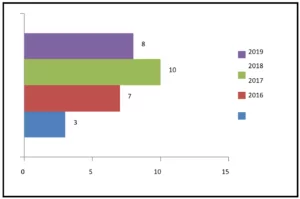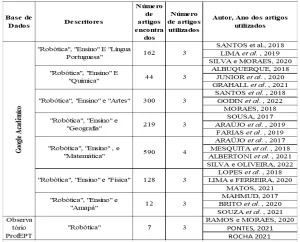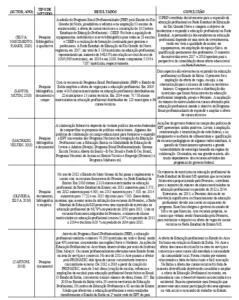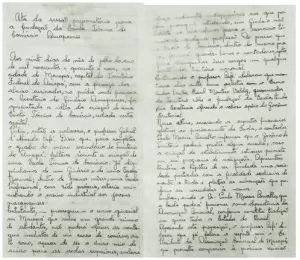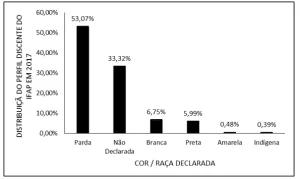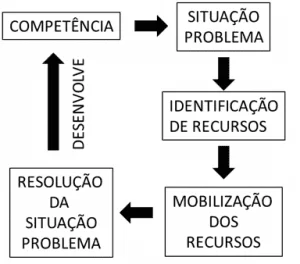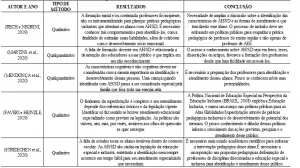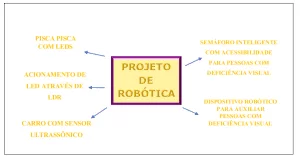REVIEW ARTICLE
SILVA, Wector Castro da [1], DENDASCK, Carla Viana [2], OLIVEIRA, Euzébio de [3]
SILVA, Wector Castro da. DENDASCK, Carla Viana. OLIVEIRA, Euzébio de. Psychophysiological contributions of Resistance Training (RT) for the treatment of anxiety disorders in young adults. Revista Científica Multidisciplinar Núcleo do Conhecimento. Year 08, Ed. 12, Vol. 03, pp. 110-126. December 2023. ISSN: 2448-0959, Acess link: https://www.nucleodoconhecimento.com.br/education/psychophysiological-contributions, DOI: 10.32749/nucleodoconhecimento.com.br/education/psychophysiological-contributions
ABSTRACT
Physical exercise can represent one of the very accessible, beneficial, and side-effect-free treatment alternatives for individuals with anxiety disorders. Among the exercise models capable of producing physiological and psychological benefits, Resistance Training (RT) stands out. Thus, the aim of this research was to describe the psychophysiological contributions of Resistance Training (RT) to the treatment of anxiety disorders in young adults. To achieve this, a qualitative literature review was conducted through searches of scientific articles on the topic published in the following databases: National Center of Medicine; (PUBMED/MEDLINE); SCOPUS; Periódicos CAPES; Biblioteca Virtual em Saúde (BVS); Psicologia Brasil (BVS); Scientific Electronic Library Online (SCIELO); and Science Direct, considering studies published in the last 5 years. In this regard, the database search was conducted by combining two or more boolean operators applied as follows: (resistance training; OR acute resistance training; OR chronic resistance training; OR psychophysiological disorders; OR anxiety; OR anxiety disorders; AND young adults with anxiety disorders). As a result, five scientific articles were selected, meeting the inclusion criteria. Analyzing these scientific publications and establishing correlations and common results among them, it is concluded that RT is a highly effective therapeutic intervention in reducing anxiety disorder symptoms. It can be utilized as an alternative therapeutic strategy with notable outcomes for symptom reduction, providing immediate, medium-term, and long-term responses.
Keywords: Resistance training, Anxiety, Young adults.
1. INTRODUCTION
Mental disorders are characterized by significant clinical disturbances in emotional regulation, cognition, and behavior, negatively affecting the psychological, biological, physiological, or developmental processes underlying mental functioning (American Psychiatric Association, 2014). Among these disorders, anxiety disorders are a highly prevalent group of mental health conditions that can have a profoundly debilitating impact on daily functioning and well-being (Swift et al., 2014). They are characterized by excessive fear and anxiety, differentiated by objects or situations that evoke these feelings (specific phobias, social anxiety disorder, generalized anxiety disorder) and result in behavioral disturbances (Forster, 2012).
It is estimated that 264 million adults worldwide suffer from anxiety disorders. Of these adults, approximately 63% are female and 37% are male (Sabbagh et al., 2022). Additionally, the World Health Organization (WHO) reported that in 2015, this disorder ranked sixth among all mental and psychosomatic illnesses worldwide, and fourth in highly developed countries, making it one of the most impactful chronic diseases globally (Ströhle; Gensichen; Domschke, 2018).
These mental disorders are increasingly associated with the emergence and progression of psychophysiological diseases, consequently disrupting the daily biological rhythms responsible for maintaining the homeostatic balance of most vital psychological and physiological functions. The imbalance in bodily homeostasis has contributed significantly to the increasing incidence of individuals developing chronic degenerative diseases such as adverse cardiovascular conditions, hormonal changes, sleep-wake cycle dysregulation, and premature mortality (Celano et al., 2016). This underscores the need for alternative therapies, such as those obtained through the practice of Strength Training (ST) Physical Exercise, which has been proven to significantly improve these clinical conditions.
In this context, physical exercise can represent one of the accessible, beneficial, and side-effect-free treatment alternatives for individuals with anxiety disorders (Dishman, 1995). Previous studies have reported that physical exercise significantly reduces anxiety scores in youth, young adults, and the elderly, improving functional autonomy and quality of life (Da Silva et al., 2019; Vancini et al., 2017). Furthermore, other results also suggest these benefits for non-clinical populations resulting from the practice of physical exercise for the improvement of quality of life (Rebar et al., 2015). However, despite many studies demonstrating the beneficial effects of aerobic exercise on mental health outcomes, Resistance Training (RT), though less known to the general public, is a form of physical exercise that also produces excellent physiological and psychological benefits (De Melo Araújo et al., 2017).
RT is conceptualized as a strength-demanding exercise method aiming to overcome opposing forces, seeking to achieve maximum muscle contraction through different types of contractions (concentric, eccentric, and isometric). This training is effective for developing or maintaining physical, organic, and musculoskeletal capabilities. The practice of RT is recognized as a physical workout that, in addition to promoting various psychological benefits, is approved for preventing the loss of muscle mass and strength, promoting the maintenance of bodily functionality (NSCA, 2019). Another study asserts that RT performed by older adults can address some depressive symptoms and, consequently, improve their quality of life (De Melo Araújo et al., 2017).
Thus, considering the high prevalence of Anxiety Disorders in young adults, this article aims to describe the main psychophysiological benefits resulting from the practice of RT as a therapeutic aid of utmost relevance for the treatment of this population.
2. MATERIALS AND METHODS
The present study is of a bibliographic and qualitative nature (Thomas; Nelson, 2002). A literature search for articles was conducted using the following databases: National Center of Medicine (PUBMED/MEDLINE), SCOPUS, Periódicos CAPES, Biblioteca virtual em saúde (BVS), Psicologia Brasil (BVS), Scientific Electronic Library Online (SCIELO), and Science Direct, published in the last 5 years. In this regard, the database search was carried out through the combination of two or more boolean operators applied as follows: (resistance training; OR acute resistance training; OR chronic resistance training; OR psychophysiological disorders; OR anxiety; OR anxiety disorders; AND young adults with anxiety disorders).
2.1 ELIGIBILITY CRITERIA
The studies considered eligible for inclusion met the following criteria: 1) being a clinical trial published in an English-language peer-reviewed journal; 2) articles available for full reading; 3) studies addressing Resistance Training (RT) in an acute or chronic manner in individuals with anxiety disorders or symptoms; and 4) studies conducted on human subjects. Exclusion criteria were as follows: 1) systematic or literature review articles; 2) letters to the editor; 3) research projects; 4) duplicate articles; 5) articles not reporting individuals diagnosed with anxiety or symptoms; 6) not describing volume and intensity variables in the intervention protocol; 7) articles that do not fit the scope based on title and abstract.
2.2 CODING OF STUDIES
The eligible studies were accessed, and their data were individually extracted for the following variables: descriptive information about the subjects by included group, gender, age range, and training status; the number of subjects in each group; study duration; training frequency (days per week); training volume (number of sets and repetitions per exercise); and types of indicators for anxiety.
3. RESULTS
For a better understanding and as a didactic presentation of the literature review results, we have organized the presentation into two stages: i) Synthesis of the selected studies after searching and analyzing using the terms, as described in the methodology; ii) literature review divided into four subtopics: sample characteristics; anxiety indicators; RT protocol; and dose-response effect of RT on anxiety.
3.1 SYNTHESIS OF SELECTED STUDIES
In the first stage of the research, 7 articles were found on the PUBMED platform, of which only 2 met our inclusion criteria. Regarding the SCIELO search platform, we did not find any articles matching the descriptors. On the SCOPUS platform, we found 24 articles, with 5 meeting our inclusion criteria. Thus, 8 articles were initially included after reading the abstracts. After this stage, we identified 2 duplicate studies and 1 without open access to the full text, resulting in 4 articles eligible for the present review. The schematic representation of the review and article selection is presented in Figure 1. The syntheses of the selected studies are presented in Table 1.
Figure 1 – Schematic representation of the review and article selection
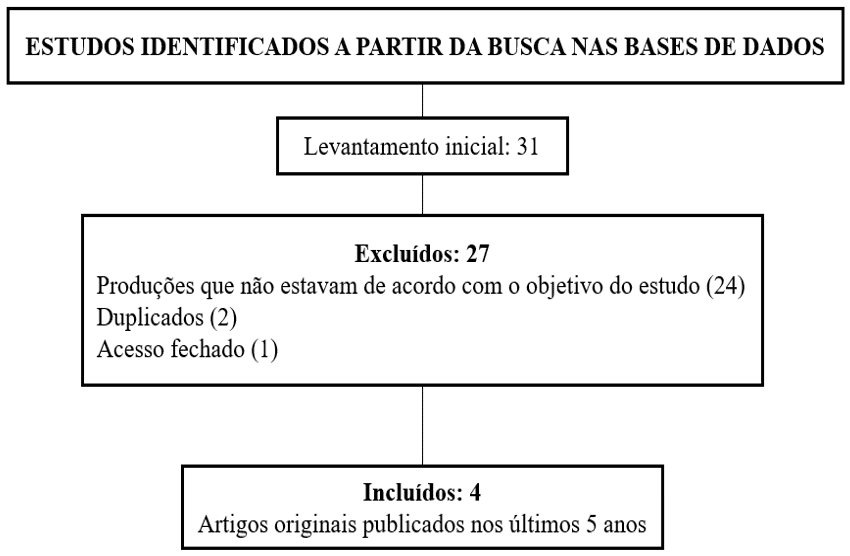
Table 1: Syntheses of selected studies after searching and analysis using the terms “(resistance training OR acute resistance training OR chronic resistance training) AND (psychophysiological OR anxiety OR anxiety disorders) AND young adults”
| Author | Sample | Objective | Duration/
Weekly frequency |
RT Protocol | Anxiety Indicators | Key Findings |
| Akyüz, (2017) | Sedentary young adults (Males; n=20; 22.57±3.25 years) | To describe the effect of the eight-week exercise program on physical-social anxiety conditions in adult men | 3 sessions/week for 8 weeks | 8 whole-body exercises.
First 4 weeks (40% of estimated 1 RM, 3 sets, 12 repetitions). Next 4 weeks (60% of estimated 1 RM, 3 sets, 12 repetitions) |
Social Physical Anxiety Scale (SPAS) before and after 8 weeks of training | The 8-week RT protocol had a positive effect on strength and showed a significant difference in SPAS. Thus, SPAS was related to an increase in strength and, consequently, physical appearance |
| Faro et al. (2019) | Sedentary college women (n=34; 27±4.5 years)
|
Compare acute sessions of functional resistance training (FRT) versus traditional resistance training (TRT) on affect, state anxiety pleasure, and physiological measures in college women | 4 sessions over 4 weeks | 8 whole-body exercises. 2 sessions of FRT and 2 sessions of TRT (50% to 70% of 10RM, 2 sets of 10 repetitions) | Feeling Scale (FS) and State-Trait Anxiety Inventory (STAI) at pre, post-0, and post-15 min.
Physical Activity Enjoyment Scale (PACES) immediately after each training session |
Acute sessions of functional resistance training and traditional resistance training contributed to anxiety reduction and increased affective responses. Functional training showed more significant reductions in anxiety state than traditional resistance training |
| Gordon et al. (2020a) | Sedentary young adults
(TR: n=14; 5 Males and 6 Females; 25.2±5.7 years) (GC: n=14; 5 Males and 6 Females; 28.4±6.6 years) |
Quantify the effects of ecologically valid resistance training on anxiety and worry symptoms among young adults without anxiety disorders | 2 sessions/week for 8 weeks | 8 whole-body exercises (2 sets of 8 to 12 repetitions). 5 RM test for load manipulation | For initial screening: Psychiatric Diagnostic Screening Questionnaire (PDSQ-GAD) and Pennsylvania State Worry Questionnaire (PSWQ). For anxiety assessment: State-Trait Anxiety Inventory subscale (STAI-Y2) and PSWQ for worry | Ecologically valid resistance training significantly improves anxiety symptoms among young adults without anxiety disorders and shows significant strength improvements, with small reductions in worry magnitude when compared to the control group |
| Gordon et al. (2020b) | Sedentary young adults
(TR with GAD: n=12; 4 Males and 8 Females; 26.5±5.8 years); (TR without GAD: n=14; 5 Males and 9 Females; 25.2±5.7 years) (CG with GAD: n=15; 6 Males and 9 Females; 26.7±4.9 years); (CG without GAD: n=14; 5 Males and 6 Females; 28.4±6.6 years) |
Quantify the acute and chronic effects of resistance training on signs and symptoms of Generalized Anxiety Disorder (GAD) among young adults with and without GAD | 2 sessions/week for 8 weeks | 8 whole-body exercises (2 sets of 8 to 12 repetitions). 5 RM test for load manipulation. | For initial screening: Psychiatric Diagnostic Screening Questionnaire (PDSQ-GAD) and Pennsylvania State Worry Questionnaire (PSWQ). For anxiety assessment: State-Trait Anxiety Inventory subscale (STAI-Y2), for worry PSWQ, depression assessed weekly using the Quick Inventory of Depressive Symptomatology (QIDS-SR16) | Investigating the effects of resistance training among individuals with emerging signs and symptoms of an anxiety disorder is particularly important |
| Gordon et al. (2021) | Sedentary young adults
(TR: n=12; 4 Males and 8 Females; 26.5±5.8 years) (CG: n=15; 6 Males and 9 Females; 26.7±4.9 years) |
Quantify the effects of ecologically valid resistance training on the state of anxiety disorder and symptoms of worry and anxiety among young adults with GAD. | 2 sessions/week for 8 weeks | 8 whole-body exercises (2 sets of 8 to 12 repetitions). 5 RM test for load manipulation | For initial screening: Psychiatric Diagnostic Screening Questionnaire (PDSQ-GAD) and Pennsylvania State Worry Questionnaire (PSWQ).
For anxiety assessment: State-Trait Anxiety Inventory subscale (STAI-Y2) and for worry PSWQ |
Ecologically valid resistance training, designed according to the guidelines of the WHO and ACSM, significantly improved the condition of generalized anxiety disorder (GAD) among young adults with GAD |
Caption: RT – Resistance Training; GAD – Generalized Anxiety Disorder; AGAD – Analogous Anxiety Disorder.
Source: Developed by the authors (2023).
3.2 LITERATURE REVIEW DIVIDED INTO SUBTOPICS
3.2.1 SAMPLE CHARACTERISTICS
As a result of the selection process, 109 subjects underwent 3 intervention models. Among the included studies, three used the same training protocol but varied the sample and research objectives (Gordon et al., 2020b, 2020a, 2021). All five studies involved sedentary young individuals aged 18 to 35 years (Akyüz, 2017; Faro et al., 2019; Gordon et al., 2020a, 2020b, 2021). Regarding gender, one study included only men (Akyüz, 2017), another only women (Faro et al., 2019), and three involved both genders (Gordon et al., 2020a, 2020b, 2021).
3.2.2 INDICATORS FOR ANXIETY DISORDER
The indicators for anxiety disorder used in the selected studies were diverse. One study utilized the Social Physical Anxiety Scale (SPAS). Another chose questionnaires involving Feeling Scale (FS), State-Trait Anxiety Inventory (STAI), and Physical Activity Enjoyment Scale (PACES) (Faro et al., 2019). While three studies used the same protocol, involving sample screening, Psychiatric Diagnostic Screening Questionnaire (PDSQ-GAD), and Pennsylvania State Worry Questionnaire (PSWQ). For the assessment of training protocol moments, the State-Trait Anxiety Inventory subscale (STAI-Y2) and PSWQ were used (Gordon et al., 2020a, 2021) with the addition of the Quick Inventory of Depressive Symptomatology (QIDS-SR16) due to depression symptoms being related to anxiety (Gordon et al., 2020b).
3.2.3 RT PROTOCOLS
Most selected studies used an 8-week intervention period (Akyüz, 2017; Gordon et al., 2020a, 2020b, 2021), except for one with a duration of 4 weeks to assess the acute effects of Resistance Training (RT) with functional training (Faro et al., 2019). The weekly frequency varied in some studies, ranging from 1 session per week (Faro et al., 2019), 2 days per week (Gordon et al., 2020a, 2020b, 2021) to 3 days per week (Akyüz, 2017). Regarding exercise selection, all five studies used 8 whole-body exercises with moderate intensity (Akyüz, 2017; Faro et al., 2019; Gordon et al., 2020a, 2020b, 2021). Akyüz (2017) defined intensity as 40% to 60% of 1 RM, Faro et al. (2019) used 50% to 70% of 10 RM, and the others controlled intensity by a repetition range of 8 to 12 repetitions (Gordon et al., 2020a, 2020b, 2021). For load control, studies used the 5 RM test (Gordon et al., 2020a, 2020b, 2021), 10 RM (Akyüz, 2017; Faro et al., 2019), and the Borg scale (Faro et al., 2019; Gordon et al., 2020a, 2020b, 2021). All protocols were performed to momentary muscle failure.
3.2.4 DOSE-RESPONSE EFFECT OF RT ON ANXIETY DISORDER
Responses to RT suggest improvement in mental and physical health with strength gains (Akyüz, 2017; Faro et al., 2019; Gordon et al., 2020a, 2020b, 2021). Emphasizing that functional training, when compared to RT, appears to generate greater effects on anxiety disorder (Faro et al., 2019). Furthermore, anxiety improvement occurs immediately after RT, as there is a significant improvement in the first week of intervention (Gordon et al., 2020a).
4. DISCUSSION
The aim of this literature review was to describe the effects of Resistance Training (RT) on anxiety disorders in young adults. Specifically, the study considered the characteristics of the RT protocol across different genders, experimental designs, and analytical models for anxiety indicators. Following the search strategy, five articles were deemed eligible for this study.
Regarding the findings, Akyüz’s study (2017) suggests that 8 weeks of RT have a positive effect on strength and a significant difference in the Social Phobia Anxiety Scale (SPAS). Furthermore, dissatisfaction with physical appearance was observed to generate anxiety in individuals. The author emphasizes that the positive difference observed when comparing preliminary and final SPAS data can be considered along with the increase in strength and, consequently, physical appearance. In this sense, it can be suggested that these results are directly related to the practice of RT, as this training model can improve muscle strength (Lyristakis et al., 2022), and its practice induces a combination of physiological and psychological changes in the individual capable of releasing endorphins that enhance well-being. These alterations are potential influences on anxiety reduction (Basso; Suzuki, 2017). Additionally, this exercise model induces changes in physical appearance, capable of improving self-esteem (Zamani Sani et al., 2016) and self-image (Pop, 2016), thereby potentially reducing anxiety disorders related to insecurity about appearance (Hulme; Hirsch; Stopa, 2012).
On the other hand, the results of Faro et al.’s study (2019) suggest that Traditional Resistance Training (TRT) contributes to reductions in anxiety state and increases in affective responses immediately after and 15 minutes after an acute session. However, despite anxiolytic effects, the mechanisms mediating these effects are less clear (Teixeira-Neto et al., 2014). Disorders related to anxiety disorders are associated with alterations in the function of the Hypothalamus-Pituitary-Adrenal (HPA) axis; thus, anxiety typically occurs concomitantly with unexpected or extended activation of the stress response along the HPA axis, resulting in hypervigilance, fear, and sympathetic dysregulation (Graeff; Zangrossi, 2010). Through cortisol activity modulation, RT can affect anxiety at the level of the HPA axis (Stephens; Wand, 2012). However, further studies examining cortisol and anxiety responses simultaneously are needed for understanding the biological mediators of RT’s anxiolytic effects (Teixeira-Neto et al., 2014).
Regarding Gordon et al.‘s studies (2020b, 2020a, 2021), it was found that ecologically valid RT based on guidelines significantly improved anxiety disorder symptoms among young adults. Additionally, a significant improvement in the analog generalized anxiety severity and clinically significant improvements in worry symptoms in the same population were observed. These findings may be related to the previously mentioned effects of RT on anxiety disorders. Importantly, these studies have ecological validity, reinforcing how generalizable the findings are to real-world scenarios or typical everyday life situations (Diehl; Wahl; Freund, 2017).
5. CONCLUSION
Based on the findings derived from this literature review on the proposed topic, it can be broadly inferred, aligning with the results from all the analyzed articles, that engaging in Physical Exercises through Resistance Training (RT) is an alternative therapy with highly significant and effective outcomes when employed with proper planning, implementation, and supervision by a Physical Education professional in the treatment of psychophysiological conditions in general.
Its notable beneficial/therapeutic influence, specifically in the treatment for reducing symptoms of Anxiety Disorders, was also corroborated. RT was proven to be a successful strategy for the immediate reduction of symptoms associated with this disorder, both shortly after the initiation of training and over the medium and long term.
Furthermore, based on the results obtained from the analysis of the researched scientific articles, it is essential to highlight specific points from each:
a) Protocols involving 8 weeks of Physical Exercise through RT had a positive effect on strength and showed a significant difference in improving the clinical conditions of Social Phobia Anxiety (SPAS).
b) Acute sessions of functional training and traditional RT contributed to the reduction of Trait-State Anxiety (SAI) in pre, post-0, and post-15 minutes.
c) Engaging in Physical Exercises through ecologically valid RT significantly improved anxiety symptoms among young adults with anxiety disorders and demonstrated significant improvements in their muscle strength.
d) Investigating the effects of RT in individuals with emerging signs and symptoms of an anxiety disorder is particularly important, as evidenced by the results obtained through this type of physical exercise.
e) Quantifying and qualifying the effects of ecologically valid RT on the state of anxiety disorders and symptoms of concern and anxiety among young adults with Analogous Anxiety Disorder (AGAD) are of utmost importance for science and human health.
REFERENCES
AKYÜZ, Ö. Effect of Eight-week Exercise Program on Social Physique Anxiety Conditions in Adult Males. Journal of Education and Training Studies, v. 5, n. 3, p. 148, 2017.
AMERICAN PSYCHIATRIC ASSOCIATION. Manual diagnóstico de transtornos mentais: DSM-IV-TR. [s.l: s.n.]. v. 4, 2014.
BASSO, J. C.; SUZUKI, W. A. The Effects of Acute Exercise on Mood, Cognition, Neurophysiology, and Neurochemical Pathways: A Review. Brain plasticity (Amsterdam, Netherlands), v. 2, n. 2, p. 127–152, mar. 2017.
CELANO, C. M. et al. Anxiety Disorders and Cardiovascular Disease. Current psychiatry reports, v. 18, n. 11, p. 101, nov. 2016.
DA SILVA, L. A. et al. Effects of aquatic exercise on mental health, functional autonomy and oxidative stress in depressed elderly individuals: A randomized clinical trial. Clinics, v. 74, p. 1–7, 2019.
DE MELO ARAÚJO, K. C. et al. Exercício resistido melhora a ansiedade e depressão de mulheres de meia-idade. Journal of Physical Education (Maringa), v. 28, n. 1, p. 1–7, 2017.
DIEHL, M.; WAHL, H. W.; FREUND, A. Ecological Validity as a Key Feature of External Validity in Research on Human Development. Research in Human Development, v. 14, n. 3, p. 177–181, 2017.
DISHMAN, R. K. Physical Activity and Public Health: Mental Health. Quest, v. 47, n. 3, p. 362–385, ago. 1995.
FARO, J. et al. Functional Resistance Training and Affective Response in Female College-Age Students. Medicine and Science in Sports and Exercise, v. 51, n. 6, p. 1186–1194, 2019.
FORSTER, G. L. The Role of the Amygdala in Anxiety Disorders. In: NOVICK, A. M. (Ed.). Rijeka: IntechOpen. 2012. p. Ch. 3.
GORDON, B. R. et al. Resistance exercise training for anxiety and worry symptoms among young adults: a randomized controlled trial. Scientific Reports, v. 10, n. 1, p. 1–9, 2020a.
GORDON, B. R. et al. Acute and chronic effects of resistance exercise training among young adults with and without analogue Generalized Anxiety Disorder: A protocol for pilot randomized controlled trials. Mental Health and Physical Activity, v. 18, n. January, p. 100321, 2020b.
GORDON, B. R. et al. Resistance exercise training among young adults with analogue generalized anxiety disorder. Journal of Affective Disorders, v. 281, n. February, p. 153–159, 2021.
GRAEFF, F. G.; ZANGROSSI, H. The hypothalamic-pituitary-adrenal axis in anxiety and panic. Psychology & Neuroscience, v. 3, n. 1, p. 3–8, 2010.
HULME, N.; HIRSCH, C.; STOPA, L. Images of the self and self-esteem: do positive self-images improve self-esteem in social anxiety? Cognitive behaviour therapy, v. 41, n. 2, p. 163–173, 2012.
LYRISTAKIS, P. M. et al. The influence of considering individual resistance training variables as a whole on muscle strength: A systematic review and meta-analysis protocol. PLOS ONE, v. 17, n. 1, p. e0262674, jan. 2022.
NSCA. Manual NSCA – Fundamentos del entrenaminto personal. España: Editorial Paidotribo, 2019.
POP, C. Self-esteem and body image perception in a sample of university students. Egitim Arastirmalari – Eurasian Journal of Educational Research, n. 64, p. 31–44, 2016.
REBAR, A. L. et al. A meta-meta-analysis of the effect of physical activity on depression and anxiety in non-clinical adult populations. Health psychology review, v. 9, n. 3, p. 366–378, 2015.
SABBAGH, H. J. et al. Anxiety among Adolescents and Young Adults during COVID-19 Pandemic: A Multi-Country Survey. International Journal of Environmental Research and Public Health, v. 19, n. 17, 2022.
STEPHENS, M. A. C.; WAND, G. Stress and the HPA axis: role of glucocorticoids in alcohol dependence. Alcohol research : current reviews, v. 34, n. 4, p. 468–483, 2012.
STRÖHLE, A.; GENSICHEN, J.; DOMSCHKE, K. The Diagnosis and Treatment of Anxiety Disorders. Deutsches Arzteblatt international, v. 155, n. 37, p. 611–620, set. 2018.
SWIFT, P. et al. Living with anxiety: Understanding the role and impact of anxiety in our lives. Mental Health Fondation, v. 43, n. 1, p. 125–132, 2014.
TEIXEIRA-NETO, R. G. et al. Canine visceral leishmaniasis in an urban setting of Southeastern Brazil: An ecological study involving spatial analysis. Parasites and Vectors, v. 7, n. 1, p. 1–10, 2014.
THOMAS, J. R.; NELSON, J. K. Métodos de pesquisa em atividade física. 3. ed. Porto Alegre: Artmed Editora, 2002.
VANCINI, R. L. et al. Pilates and aerobic training improve levels of depression, anxiety and quality of life in overweight and obese individuals. Arquivos de Neuro-Psiquiatria, v. 75, n. 12, p. 850–857, 2017.
ZAMANI SANI, S. H. et al. Physical activity and self-esteem: testing direct and indirect relationships associated with psychological and physical mechanisms. Neuropsychiatric disease and treatment, v. 12, p. 2617–2625, 2016.
[1] Concluding the Undergraduate Course in Physical Education. ORCID: 0009-0009-7462-9454. Currículo Lattes: http://lattes.cnpq.br/2167053335387306.
[2] Ph.D. in Psychology and Clinical Psychoanalysis. Currently pursuing a Ph.D. in Communication and Semiotics at Pontifical Catholic University of São Paulo (PUC/SP). Master’s degree in Religious Sciences from Mackenzie Presbyterian University. Master’s degree in Clinical Psychoanalysis. Bachelor’s degree in Biological Sciences. Bachelor’s degree in Theology. With over 15 years of experience in Scientific Methodology (Research Method) guiding Master’s and Ph.D. students in Scientific Production. Specialized in Market Research and Health-related Research. ORCID: https://orcid.org/0000-0003-2952-4337. Lattes: http://lattes.cnpq.br/2008995647080248.
[3] Supervisor. Biologist, Ph.D. in Tropical Diseases, Professor, and Researcher in the Physical Education Department at the Federal University of Pará (UFPA). ORCID: 0000-0001-8059-5902. Currículo Lattes: http://lattes.cnpq.br/1807260041420782.
Submitted: December 12, 2023.
Approved: December 20, 2023.

